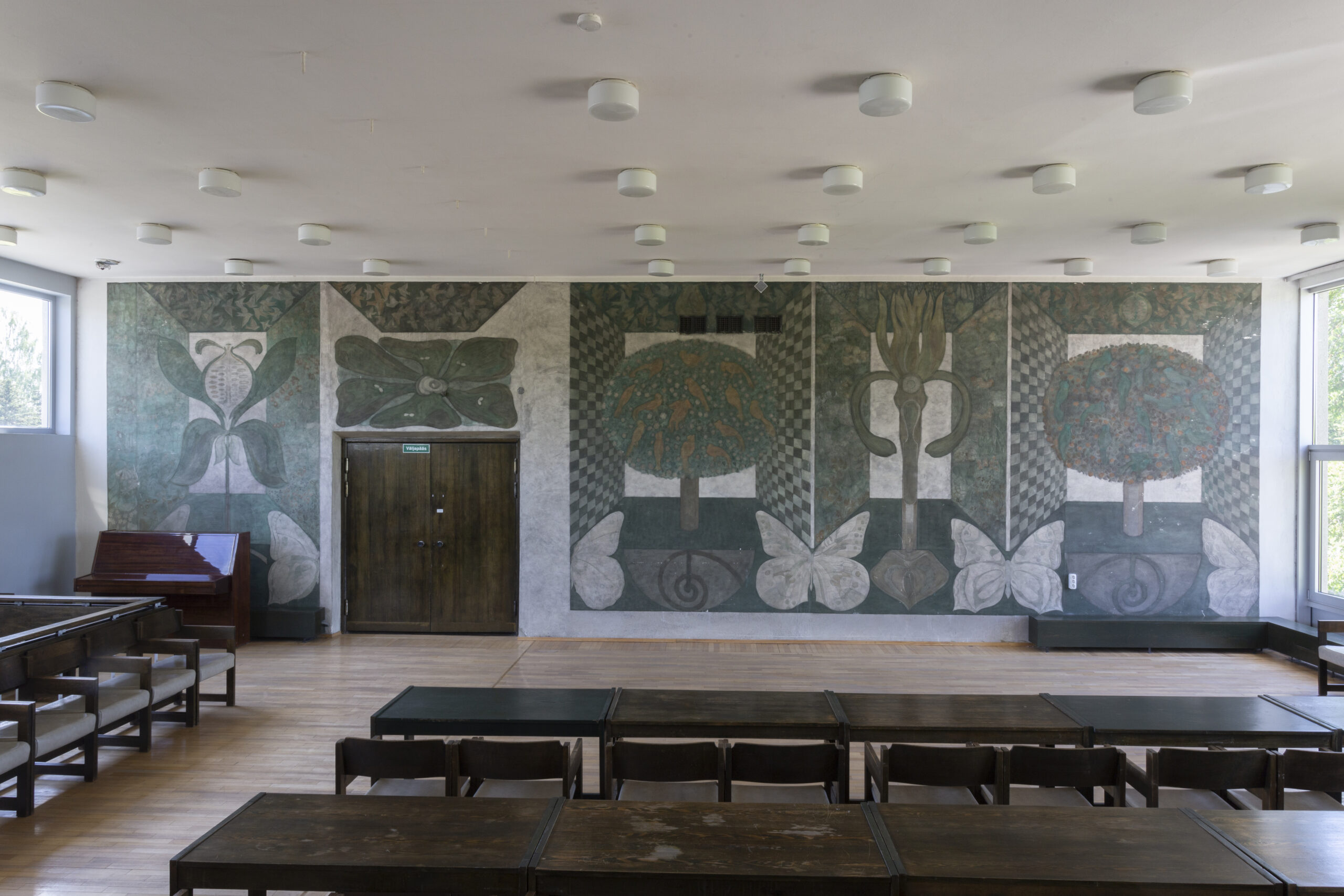Frescoes in the Veterinary Centre of Lääne-Virumaa
Year of completion: 1976
Address: Lääne-Virumaa, Piira village, Neffi 2
Author Eva Jänes
Fresco
387 x 1243; 387 x 1243, 96m² in total
The Veterinary Centre building with the fresco is cultural monument no. 30923
The new complex for the Rakvere veterinary infirmary would probably have never been built at Piira manor park if the local veterinary centre had not had someone to call the whole project into existence – the head veterinary doctor and fervent visionary, Taimi Parve. She was able to reject the standard building plan and fought for a contemporary building constructed after a custom plan (architect Arvi Aasmaa), where the functions of a laboratory and an office building would be combined. The process of seeking permits and financing up until the construction dragged on for ten years – an example of the heroic perseverance in breaking through Soviet bureaucracy, which is much like a true crime novel according to Parve herself.
The idea to commission paintings into the hall of the veterinary centre came from Taimi Parve as well, and was linked to her communications with Valve Pormeister who broadened the doctor’s horizons on the possibilities of connecting modern architecture with paintings. Pormeister in turn had noticed Eva Jänes’s student projects and offered her to contribute in Pormeister’s project, which did not realize in Jänes’s final school project (1970) but gave the architect reason to recommend the young, promising monumental painter to the interior designer of the new veterinary centre building, Maia Laul from ARS, with whom Eva Jänes had great cooperation from then on.
The paintings born in the long cooperation process, which took 9 months to create, entirely cover two opposing walls of the conference hall. The other two sides of the room have large windows that bring real nature into the room. Both fresco walls are divided into five vertical segments, with each having their own composition, framed by perspective grids – a technique that changes a two-dimensional image into a three-dimensional one, and which Jänes has later employed for other monumental paintings as well. The light fields in the middle of the grids are occupied by gigantic plant buds. The quaint figures that have an artificial impression or even seem to take choreographic poses are purely the fruits of the artist’s imagination, aiming to emphasise the notion of nature’s cyclicality – sprouting, blossoming, and withering. Beside the plants on the second wall are displayed tree crowns full of exotic birds, being symbols of bygone times according to the author. Examples taken from real nature can only be seen on the wing patterns of the butterfly frieze along the lower part of the paintings. The overall effect is calm, consistent, and abundant at the same time. The mild tonality of the light greys, browns and greens is in harmony with the interior by Maia Laul – the matching dark wooden furniture, doors, and details for the stairs that enter the room – which has survived in its original form in the room.
The initial shine of the frescoes, the glowing protective layer that appears when earth pigments mixed with limestone water dry on damp plaster, has faded over time. The painting has been damaged on one of the walls due to tar that has dripped through the ceiling during roof renovations, and the traces of washing it off. These are not the only problems – the frescoes are in dire need of restoration.
Reeli Kõiv








